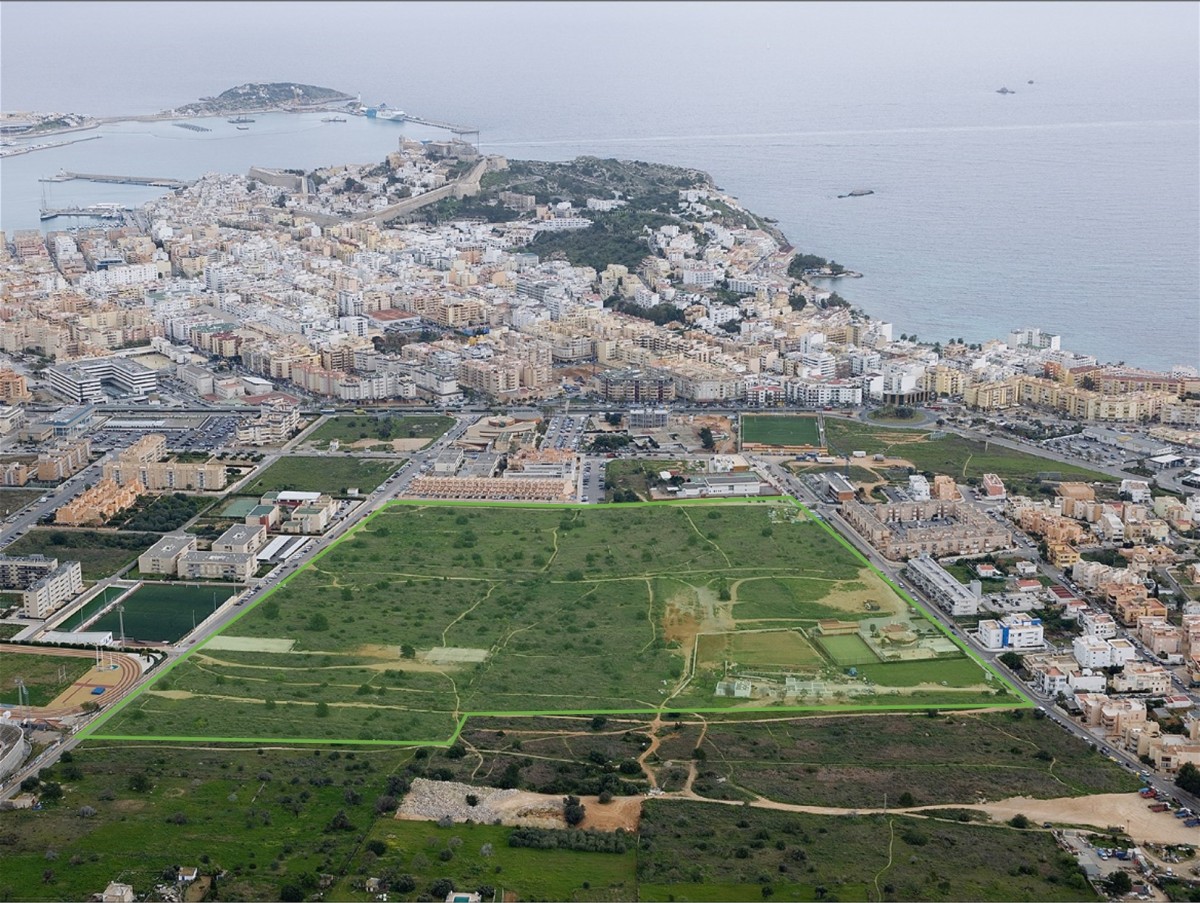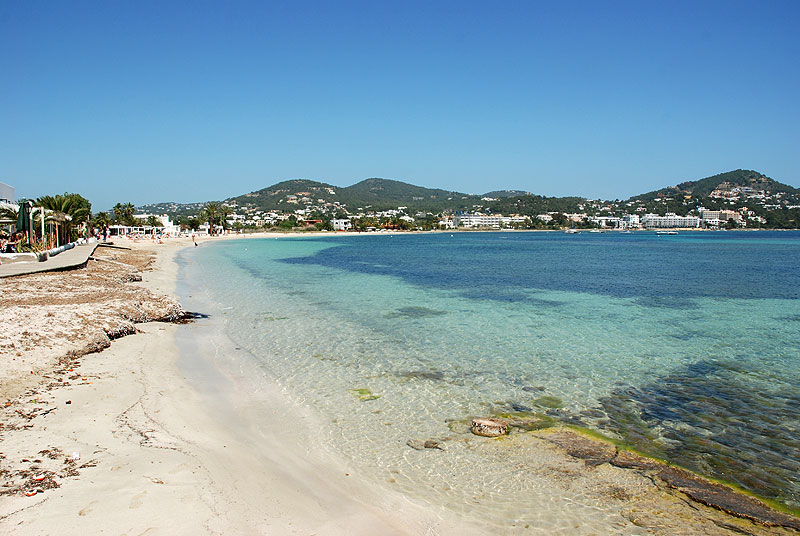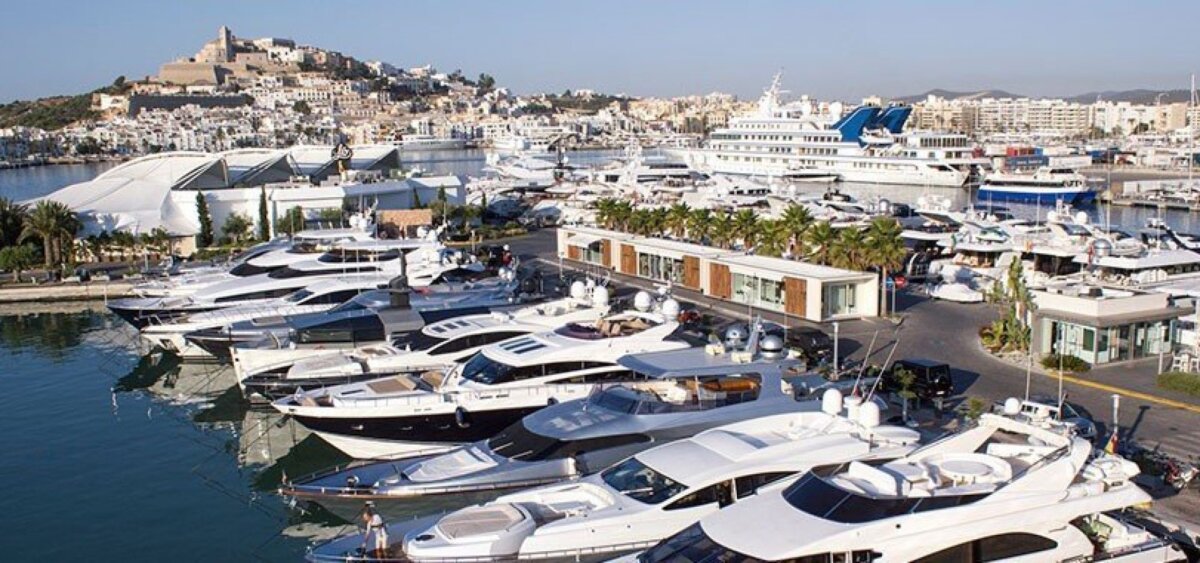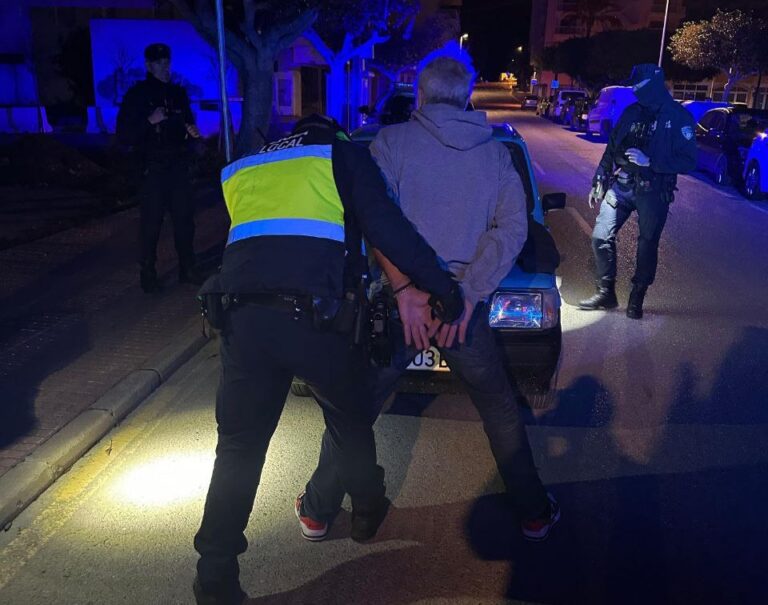In Spain, there are more than 1 million homes belonging to large holders, i.e., individuals, legal entities or public entities that own between 5 and more than 100 residential properties. These account for 4.3% of the total housing stock and 8.9% of those available ( rented or second homes). The Balearic Islands is one of the autonomous communities with the highest concentration of homes in a few hands: more than 50 thousand belong to holders with more than 5 homes; more than 26 thousand belong to holders with more than 10 homes and more than 6,600 belong to holders with more than 100 homes. These data arise from two requests for information made by eldiario.es to the Cadastre via the transparency law. It is unprecedented information that allows us to know for the first time how many properties of large owners there are and how they are distributed throughout the country.
The cases of Ibiza and Formentera
- Ibiza has a total of 2,493 dwellings belonging to large holders, which represents 10.28% of the total housing stock in the municipality. Of this percentage, 5.73% (1,389) corresponds to holders of between 10 and 25 homes; 3.20% (777) to holders of between 25 and 100 homes, and 1.35% (337) to owners of more than 100 homes.
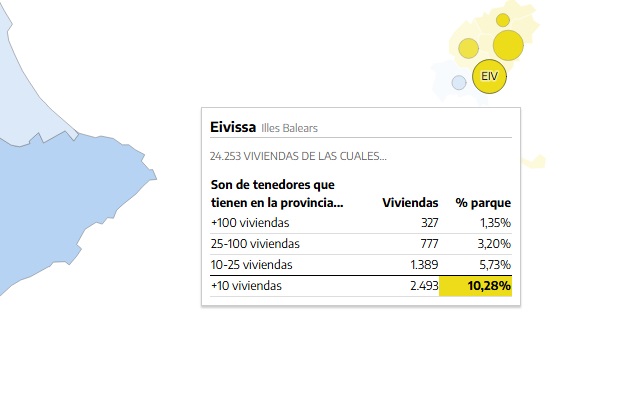
- Sant Antoni de Portmany has registered 862 properties in the hands of large property owners (7.48% of the total number of properties). 621 (5.39%) belong to holders of between 10 and 25 dwellings; 207 (1.8%) to holders of between 25 and 100 dwellings, and 34 (0.29%) to owners of more than 100 dwellings.
- Santa Eulària des Riu has 2,007 dwellings (11.53%) of large holders. Of this total, 751 (4.31%) belong to holders of between 10-25 dwellings, 597 (3.43%) to holders of between 25 and 100 dwellings, and 659 (3.79%) to holders of more than 100 dwellings.
- Sant Joan de Labritja has 378 dwellings (21.32%) of these characteristics, of which 93 (5.25%) correspond to owners of between 10 and 25 dwellings, 146 (8.23%) are owners of between 25 and 100, and 139 (7.84%) are owners of more than 100 residential properties.
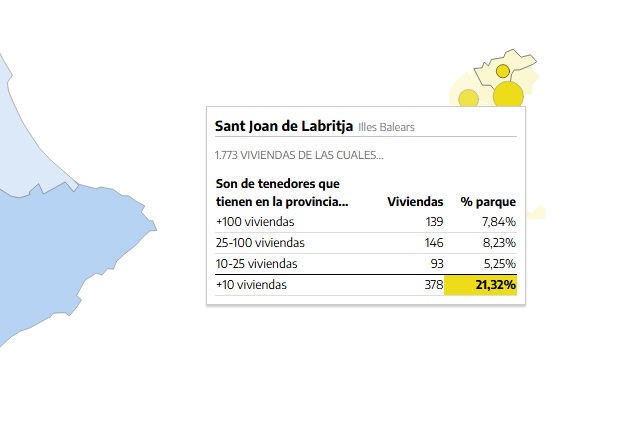
- Sant Josep de sa Talaia is the least concentrated municipality according to these criteria, accumulating 437 dwellings (3.03%) in the hands of large holders. 1.92% (276) are owners of between 10 and 25 dwellings, 0.43% (62) are owners of between 25 and 100 dwellings, and the remaining 99 (0.69%) are owners with more than 100 residential properties.
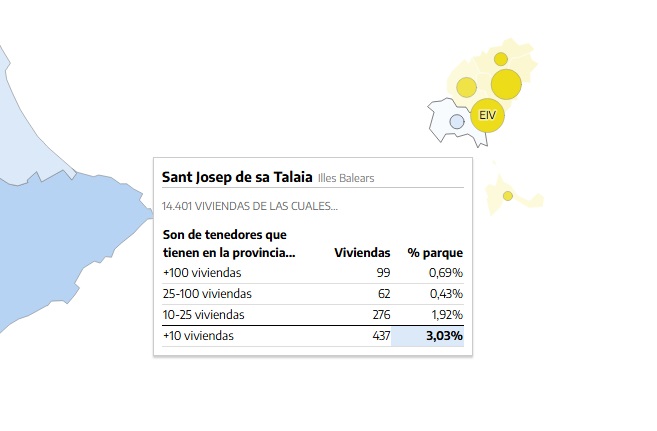
- Finally, Formentera has 185 homes (7.04% of the municipality’s housing stock) in concentrated hands. Of this total, 102 (3.88%) are held by owners of between 10 and 25 homes, 68 (2.59%) by owners of between 25 and 100 homes, and the remaining 15 (0.57) by owners of more than 100 homes.
The concentration of housing in the Balearic Islands
As mentioned above, the Balearic Islands is one of the autonomous communities where more owners accumulate a large number of dwellings. The case of highest concentration in percentage terms is presented in the municipality of Sant Joan de Labritja (21.32%), followed by Es Mercadal (11.63%), Santa Eulària des Riu (11.53%), Eivissa (10.28%) and Alaior (9.49%). This means that only the island of Ibiza has 3 of the municipalities with the highest number of properties in the hands of large holders in the whole Balearic Islands. Moreover, these numbers are well above the national average of homes concentrated in a few owners (4.3% of the total stock and 8.9% of those available).
Housing and rental crisis
These statistics show another side of a well-known problem in the Pitiusas: the price of housing and rents. The Balearic Islands is positioned as the Spanish province where access to a house demands greater economic effort, both in purchase and rent, according to a reportAccording to an Idealista report published this November, the Balearic Islands is positioned as the Spanish province where accessing a home requires the greatest economic effort, both in terms of purchase and rent, according to a report published this November. A recent report highlights Santa Eulària and Calvià as two of the most expensive locations in the Balearic Islands to access a rental property. Specifically, buying a home on the islands requires allocating 46% of monthly income, while renting involves 52%, figures that far exceed the 30% recommended by experts. This effort has increased in the last year, with an increase of 3% for buying and 1% for renting. Palma leads the national rankings, being the capital where more family income is needed for both options, with 47% to buy and 48% to rent. At the national level, the Balearic Islands leads a trend of rising economic effort for housing, driven by the lack of supply and rising prices. In renting, it shares first place with Malaga, followed by provinces such as Barcelona and Valencia. In buying, it is followed by Malaga and Santa Cruz de Tenerife.

